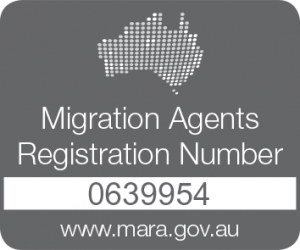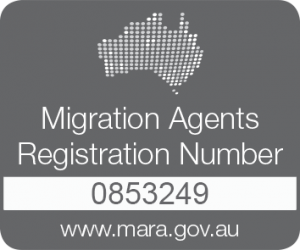New pathways and updates to existing visa programs.
New pathways and updates to existing visa programs.
February 2023
The past month has seen some exciting developments in Australian migration. With the country’s immigration policies constantly evolving to meet demands, it is important to stay in-the-know of the significant changes that provide new opportunities and options to consider if you are looking into making Australia your home.
We will be recapping some of the latest migration-related news in the month of February, including new pathways and updates to existing visa programs.
Extended post-study work rights for Temporary Graduate Visa (subclass 485) holders and Student visa work hours
Big news for international students! The Australian government has announced a two- year increase in the post-study work rights for international graduates on their Temporary Graduate Visa (subclass 485) visa. This update will come into effect from 1 July 2023. The extended post-study work rights are available to international graduates with select degrees in industries with verified skill shortages.
From July 2023, international graduates from eligible degrees will be granted the following extension
A list of eligible occupations and qualifications and factsheet are available on the Department of Education website.
The 485 graduate visa is integral to many international students’ journey towards securing a chance to work and establish their careers in Australia. This recent extension of post-study work duration provides an even better springboard for visa holders to seek permanent skilled visas, either employer-sponsored or General Skilled Migration visas.

Also from 1 July 2023, international students’ permitted work hours will increase from 40 to 48 hours per fortnight.
This follows the reinstatement of work restrictions for primary and secondary student visa holders from 1 July 2023 – which were temporarily relaxed to address skill shortages – and offers a rise from the previous cap.
You can refer to the factsheet detailing the allowable working hours for international students.
Working Holiday Maker (WHM) program unrestricted work rights
On 19 January 2022, the temporary relaxation of the 6-month work limitation (visa condition 8547) for Working Holiday Makers (WHMs) was extended until 30 June 2023. This means that starting on 1 July 2023, the 6-month work limitation will once again come into play; however, WHMs will be able to continue working for their employer for a new 6-month period.
With this update, any work done prior to 1 July 2023 will not count against the 6-month limitation period.
This change applies to anyone in Australia with a WHM visa of any sort, regardless of their date of entry, or a Bridging visa with condition 8547 imposed.
Permanent residence pathway opens for 482 visa holders on the Regional Occupations List
This month, the Department of Foreign affairs has announced a new permanent residence pathway for Temporary Skill Shortage (TSS) Subclass 482 visa holders who remained in Australia during the pandemic with an occupation on the ROL.
Temporary Skill Shortage (TSS) Subclass 482 visa holders who have stayed in Australia for at least one year between 1 February 2020 and 14 December 2021 are now able to apply for permanent residence through the Employer Nomination Scheme (ENS) subclass 186 Temporary Residence Transition stream (TRT).
If you are eligible and meet all other requirements for the TRT stream of the ENS visa, you can now apply for PR visa through this pathway:
– Applicants must have worked for their employer full-time for at least three years
– Applicants must be nominated by their employer.
This pathway is currently available for two years from the date of commencement (1 July
2022).
Independent Skilled Migration – Subclass 189
The department reports a staggering number of invitations in December with 35,000 invitations sent out for subclass 189, the highest number on record. Many of these invitations were sent out to historically lodged 189 EOI’s, i.e lodged nearly two years prior, and as such skill assessments may have expired by time of invitation
The Department have updated their website to advise as follows: Delegates of the Minister will now accept a suitable skills assessment for an applicant’s nominated skilled occupation which has been obtained within the 60 day invitation period.
This change of approach is made as a result of the decision of Thapa v Minister for Immigration, Citizenship, Migrant Services and Multicultural Affairs [2021] FCCA 686 (Thapa). The Minister will administer the Migration Regulations 1994 in accordance with the decision in Thapa, but the Minister reserves the right to make submissions in a Court that Thapa was wrongly decided.
Skills assessment validity periods are calculated as follows:
– If no validity period is shown on a skills assessment, the assessment is valid for 3 years from date of issue,
– If the validity period shown on a skills assessment is less than 3 years, the assessment is valid for the period stated on the assessment,
– If the validity period shown on a skills assessment is more than 3 years, the assessment is valid for three years from date of assessment.
https://immi.homeaffairs.gov.au/visas/working-in-australia/skills-assessment
Changes to Professional Year Policy for GSM Points
On 1 February 2023 the Department confirmed The Professional Year is not required to be commenced within the 48 months immediately before the time of invitation to apply for the visa.
The Department have clarified that the Professional Year requirement to ‘complete’ the year within the last 48 months immediately before the time of invitation to apply for the visa relates only to the date on which the professional year ended.
NSW State sponsorship
This month also brought great news for migrants who are planning to apply for NSW State sponsorship.
NSW has only issued 871 subclass 491 nominations and 2,375 subclass 190 nominations between 1 July 2022 and 31st December 2022.
This leaves many invitation slots open between now and 30 June 2023 as the expected allocation for the subclass 491 visa for the ongoing financial year is 6,168 and 6,700 for the 190 visa subclass. In December 2022, the “points scores and work experience” requirement for each occupation were removed as part of NSW 190 nomination requirements. Skills assessments, minimum EOI points, and other NSW residence criteria are still required for all applicants.
The minimum points scores and required years of skilled work experience were also removed from NSW’s subclass 491 pathway (Stream B) Skills List on February 21, 2023.
By eliminating these requirements, the NSW migration program’s eligibility standards are widened, allowing more people to be qualified to apply.
The Australian migration system is constantly updating. If you are thinking of starting a life in Australia, stay informed on the latest changes in immigration policies, and consider seeking professional advice to make sure you are guided towards a smooth and successful migration journey.
This summary is for general information purposes only and is up-to-date as of the time of writing.
Sources:
- Extended post-study work rights for international graduates – Department of
Education, Australian Government - Permanent residence pathway for Temporary Skill Shortage (TSS) subclass 482
visa holders with an occupation on the Regional Occupation List





